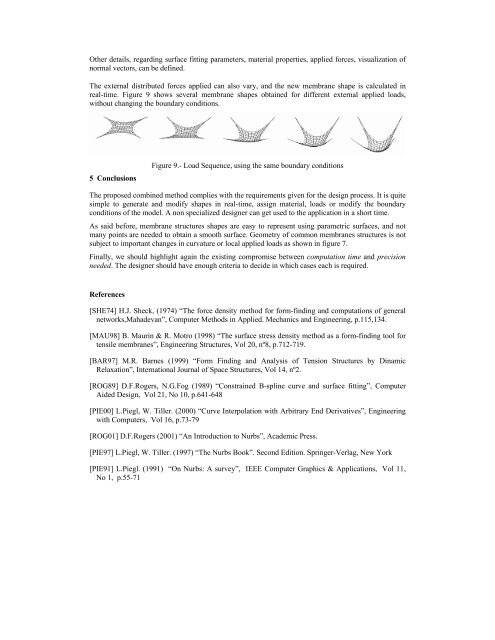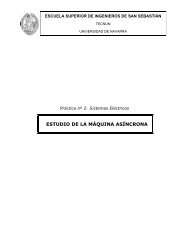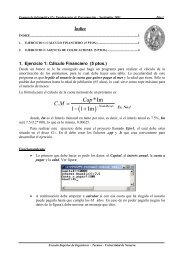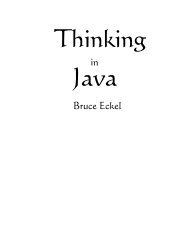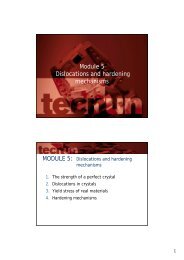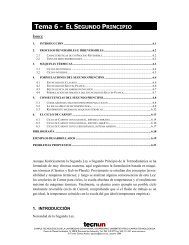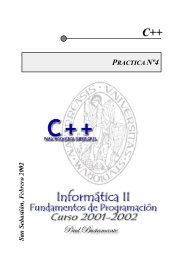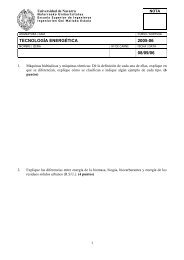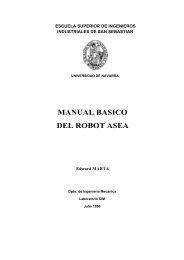surface fitting approach for tensile membranes design - Tecnun
surface fitting approach for tensile membranes design - Tecnun
surface fitting approach for tensile membranes design - Tecnun
Create successful ePaper yourself
Turn your PDF publications into a flip-book with our unique Google optimized e-Paper software.
Other details, regarding <strong>surface</strong> <strong>fitting</strong> parameters, material properties, applied <strong>for</strong>ces, visualization ofnormal vectors, can be defined.The external distributed <strong>for</strong>ces applied can also vary, and the new membrane shape is calculated inreal-time. Figure 9 shows several membrane shapes obtained <strong>for</strong> different external applied loads,without changing the boundary conditions.5 ConclusionsFigure 9.- Load Sequence, using the same boundary conditionsThe proposed combined method complies with the requirements given <strong>for</strong> the <strong>design</strong> process. It is quitesimple to generate and modify shapes in real-time, assign material, loads or modify the boundaryconditions of the model. A non specialized <strong>design</strong>er can get used to the application in a short time.As said be<strong>for</strong>e, membrane structures shapes are easy to represent using parametric <strong>surface</strong>s, and notmany points are needed to obtain a smooth <strong>surface</strong>. Geometry of common <strong>membranes</strong> structures is notsubject to important changes in curvature or local applied loads as shown in figure 7.Finally, we should highlight again the existing compromise between computation time and precisionneeded. The <strong>design</strong>er should have enough criteria to decide in which cases each is required.References[SHE74] H.J. Sheck, (1974) “The <strong>for</strong>ce density method <strong>for</strong> <strong>for</strong>m-finding and computations of generalnetworks,Mahadevan”, Computer Methods in Applied. Mechanics and Engineering, p.115,134.[MAU98] B. Maurin & R. Motro (1998) “The <strong>surface</strong> stress density method as a <strong>for</strong>m-finding tool <strong>for</strong><strong>tensile</strong> <strong>membranes</strong>”, Engineering Structures, Vol 20, nº8, p.712-719.[BAR97] M.R. Barnes (1999) “Form Finding and Analysis of Tension Structures by DinamicRelaxation”, International Journal of Space Structures, Vol 14, nº2.[ROG89] D.F.Rogers, N.G.Fog (1989) “Constrained B-spline curve and <strong>surface</strong> <strong>fitting</strong>”, ComputerAided Design, Vol 21, No 10, p.641-648[PIE00] L.Piegl, W. Tiller. (2000) “Curve Interpolation with Arbitrary End Derivatives”, Engineeringwith Computers, Vol 16, p.73-79[ROG01] D.F.Rogers (2001) “An Introduction to Nurbs”, Academic Press.[PIE97] L.Piegl, W. Tiller. (1997) “The Nurbs Book”. Second Edition. Springer-Verlag, New York[PIE91] L.Piegl. (1991) “On Nurbs: A survey”, IEEE Computer Graphics & Applications, Vol 11,No 1, p.55-71


